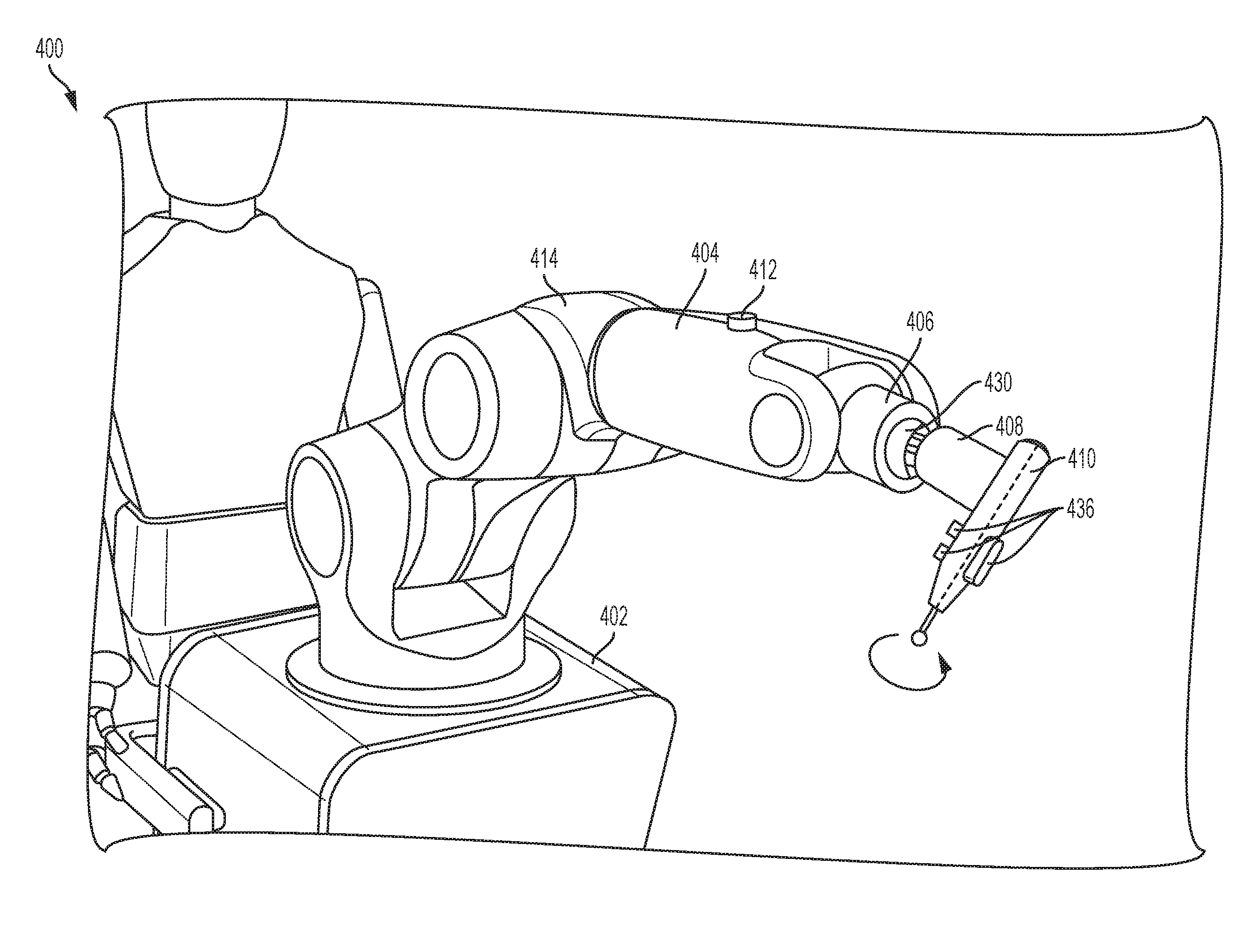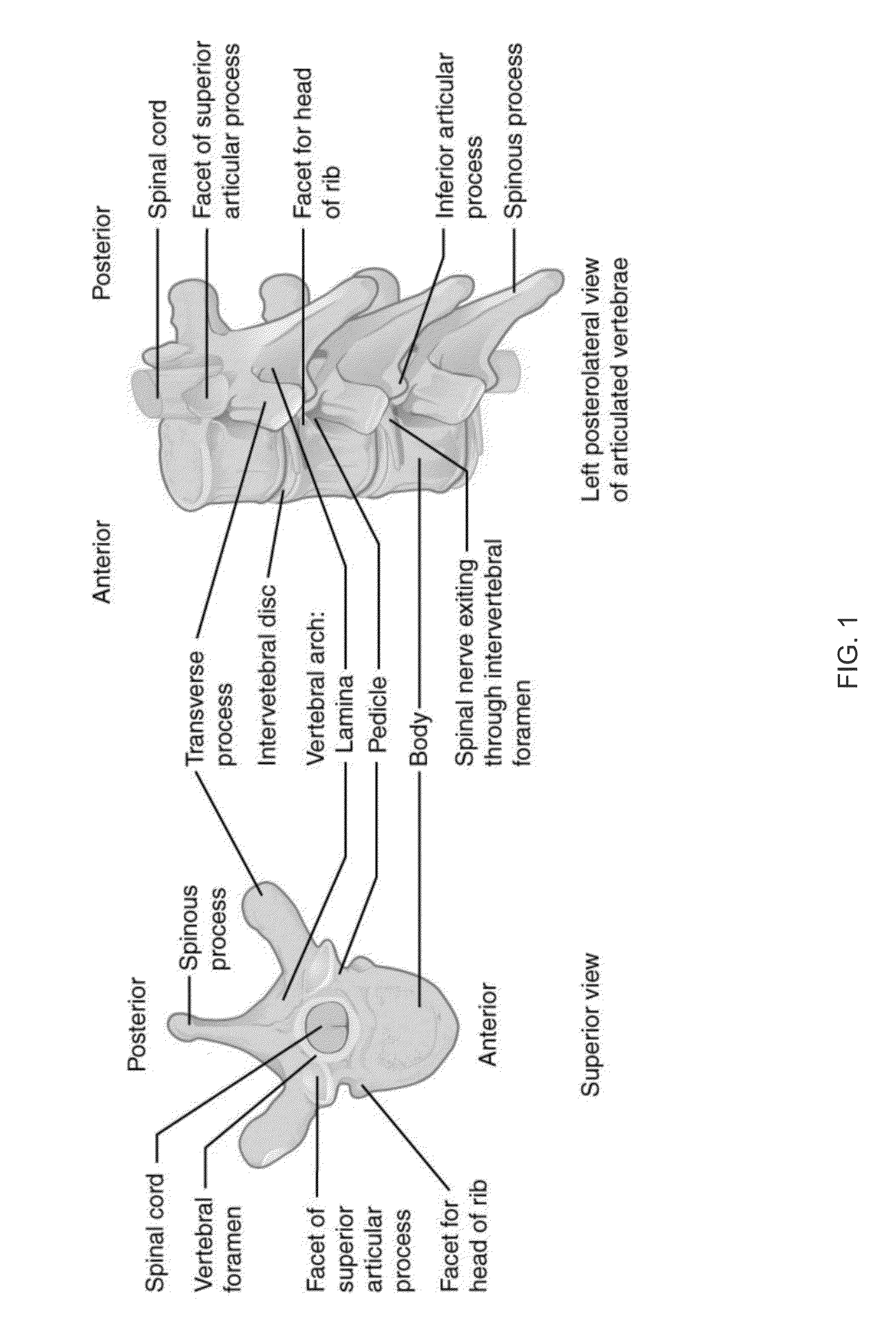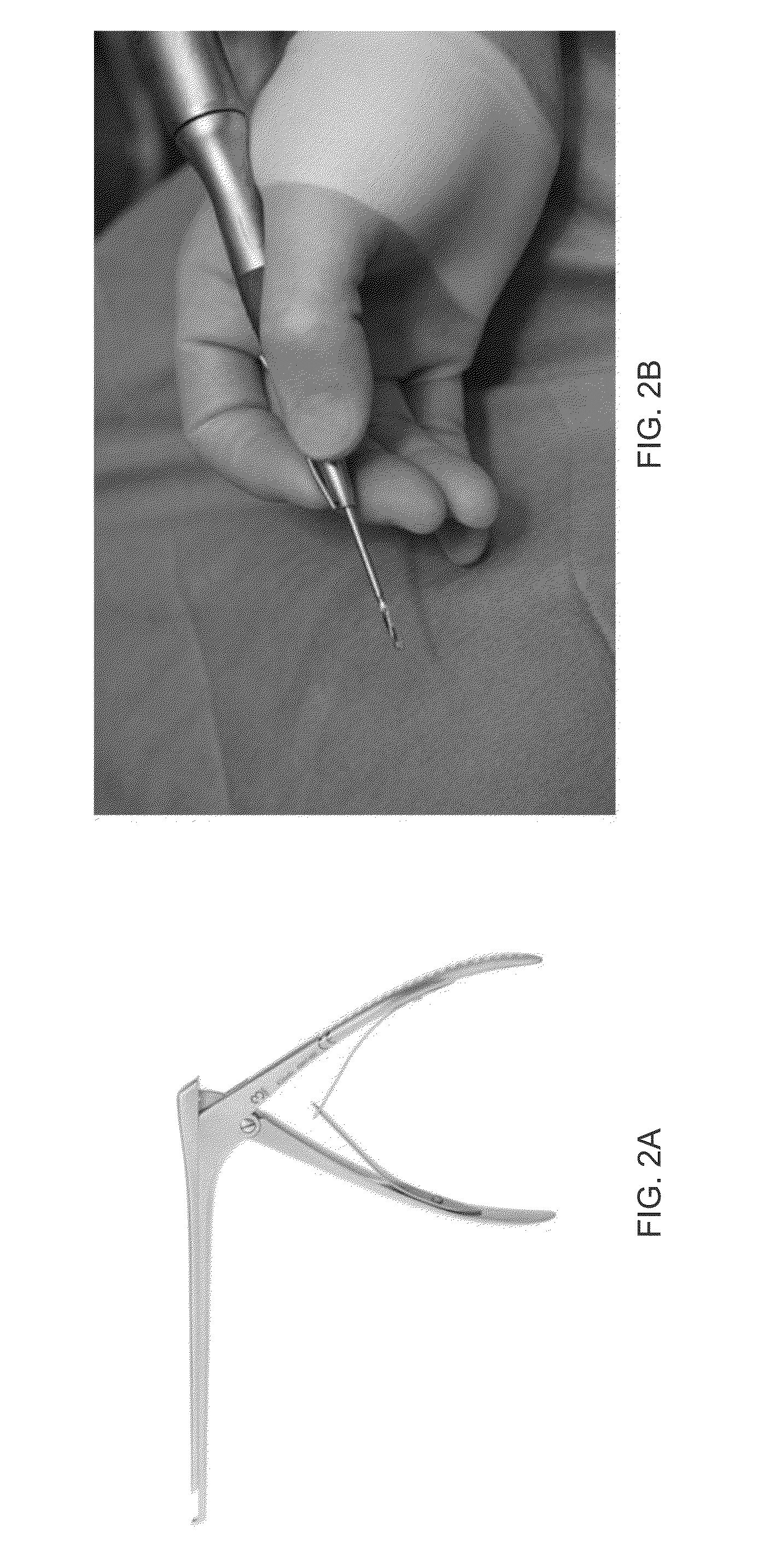Robot Assisted Volume Removal During Surgery
a robotic and volume technology, applied in the field of robotic assisted volume removal during surgery, can solve the problems of repetitive motion disorders, serious complications, difficult process of removal/trimming of lamina, etc., and achieve the effect of effectively removing volume inside a patient, shortening surgery time, and freeing surgeons from repetitive and laborious tasks
- Summary
- Abstract
- Description
- Claims
- Application Information
AI Technical Summary
Benefits of technology
Problems solved by technology
Method used
Image
Examples
Embodiment Construction
[0073]The disclosed technology includes the robotic surgical system used to remove a target volume from a patient. Initially, an incision is made and the vertebra is exposed. In some implementations, the frame of a navigation system is attached to the patient in the place selected by the surgeon. Intra-operative medical images of the target anatomy may be obtained. Alternatively, images are acquired pre-operatively. Once the images are obtained, the images must be matched to the actual patient position by a process called registration. For intra-operative images, an automatic algorithm may be used to register the actual patient position with the intra-operative images. Alternatively, point-to-point registration or surface matching may be used. The disclosed technology provides an effective and quick way for the surgeon to define volume to be removed and thereafter remove the volume. In another example, the robotic surgical system may be used to place a screw in a vertebra by assisti...
PUM
 Login to View More
Login to View More Abstract
Description
Claims
Application Information
 Login to View More
Login to View More - R&D
- Intellectual Property
- Life Sciences
- Materials
- Tech Scout
- Unparalleled Data Quality
- Higher Quality Content
- 60% Fewer Hallucinations
Browse by: Latest US Patents, China's latest patents, Technical Efficacy Thesaurus, Application Domain, Technology Topic, Popular Technical Reports.
© 2025 PatSnap. All rights reserved.Legal|Privacy policy|Modern Slavery Act Transparency Statement|Sitemap|About US| Contact US: help@patsnap.com



